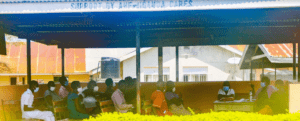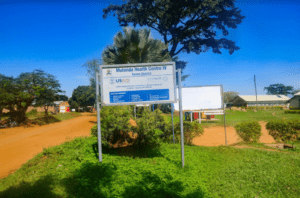Application of Improvement Science for Community Influencer Engagement: A Worthwhile Investment to Improve TB Case Notification
By Harriet Komujuni, Gender Youth & Social Inclusion Advisor, Uganda
Despite global efforts, tuberculosis (TB) continues to affect millions of people worldwide, according to the Global Burden of Disease study. Every year in Uganda, nearly half of all TB cases are not diagnosed. Men and youth (ages 15 to 24) are the least likely to be diagnosed with TB due to structural barriers and social norms; as a step toward saving more lives, there is a great need to invest in community-led approaches for improved TB case notification. This year’s World TB Day theme – “Invest to End TB Save Lives“ – urges global actors to dedicate resources to renew commitments to end TB and promote equitable access to TB treatment and care.
As a partner on the USAID Uganda Social and Behavior Change Activity (SBCA), WI-HER applied the iDARE methodology to identify key influencers, who support the community, to address the social and behavioral barriers to TB case notification, including barriers related to gender, youth, and social inclusion. iDARE is a community-led science of improvement that develops local capacity to identify gaps, design contextualized solutions, apply and assess solutions, record successes and failures, and expand successful solutions.

In Uganda, Mulanda and Kyeizoba Health Centre IV set out to engage community influencers to improve their facility TB case notification target. As a first step in the process, the community proposed various influencers, including religious leaders, retired teachers, and cultural leaders. These influencers were later contacted to get their consent and readiness to support the cause.
These influencers were then oriented in the iDARE methodology and basic information about:
- The signs and symptoms of TB;
- The need for partner support in treatment and diagnosis of TB;
- The key population in relation to TB; and,
- The role of information sharing to prevent TB disease.
Influencers also learned about existing TB cases at the facilities, as these cases served as the index and guide on possible hot spots for TB disease. During interpersonal communication in the communities, the influencers identified key barriers to health-seeking behavior for TB diagnosis and treatment. These barriers included:
- Perceptions that TB is low risk.
- Cultural beliefs that TB is a curse, not a disease.
- The belief that the cough is normal, so there is no need to go to health centers, because the community could treat it locally.
Gender, youth, and social inclusion factors also influenced TB diagnosis and treatment. Men are more affected by TB compared to women due to the risk of exposure during their social activities, such as spending time in enclosed places like local cinemas and bars. Men also believed they were too strong to be affected by TB.

To reach community members, community influencers mapped TB hotspots, and information was provided in places such as bars and sports betting centers to address cultural beliefs and explain the risk of exposure to TB in such areas. The influencers also provided facts about TB during community dialogues and TB contact tracing activities. During these activities, influencers also addressed the belief in the community that only persons living with HIV could contract TB. Community members feared a TB diagnosis, because there are still high levels of stigma associated with HIV, and they did not want to risk facing discrimination.
The team learned that the provision of locally contextualized information by community-based influencers could tackle gender, youth, and social inclusion related barriers to improve health-seeking behaviors for diagnosis and treatment of TB. This simultaneously increased the risk perception in the community. In conclusion, investing in locally co-created solutions improves the outcomes of TB care and save more lives.